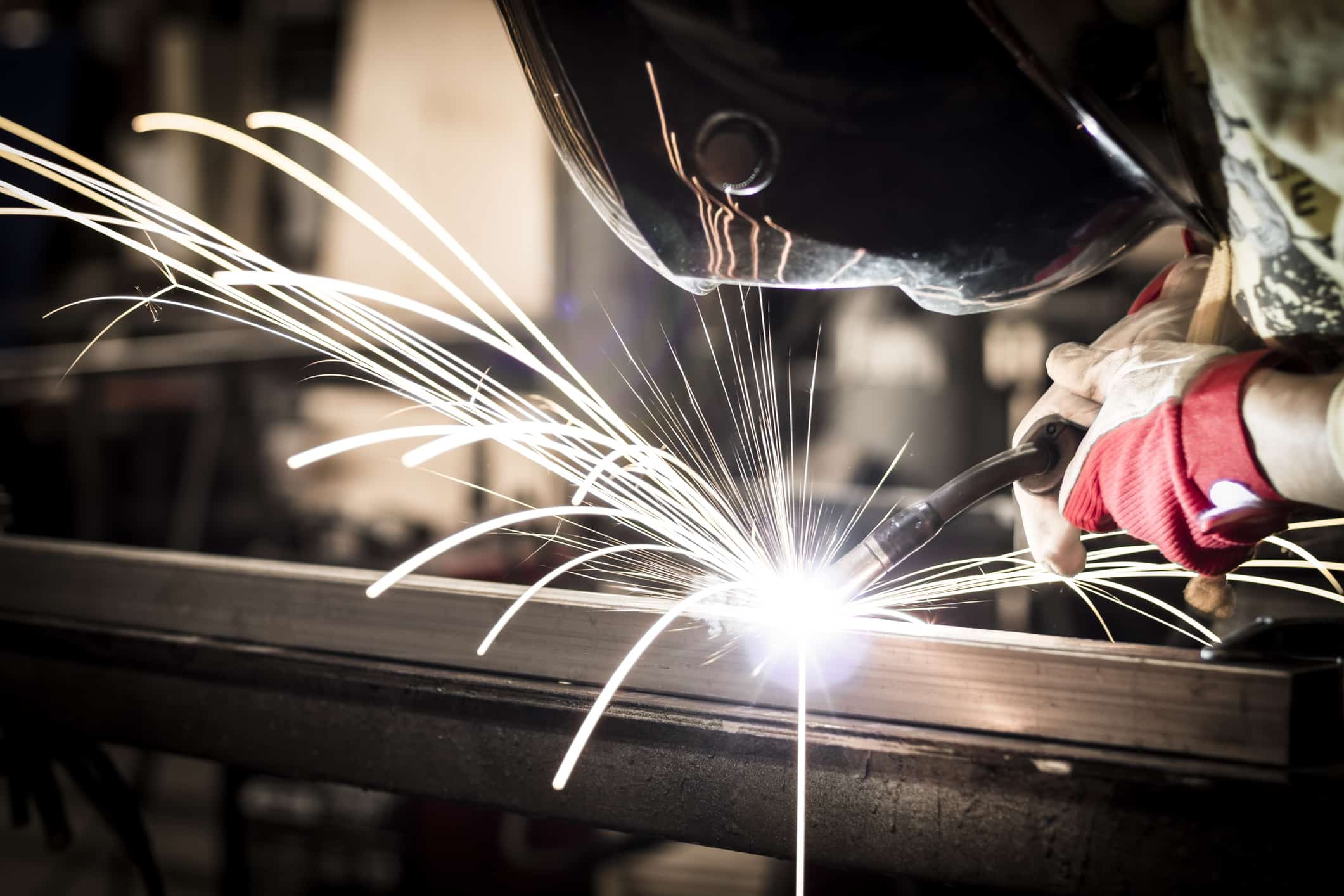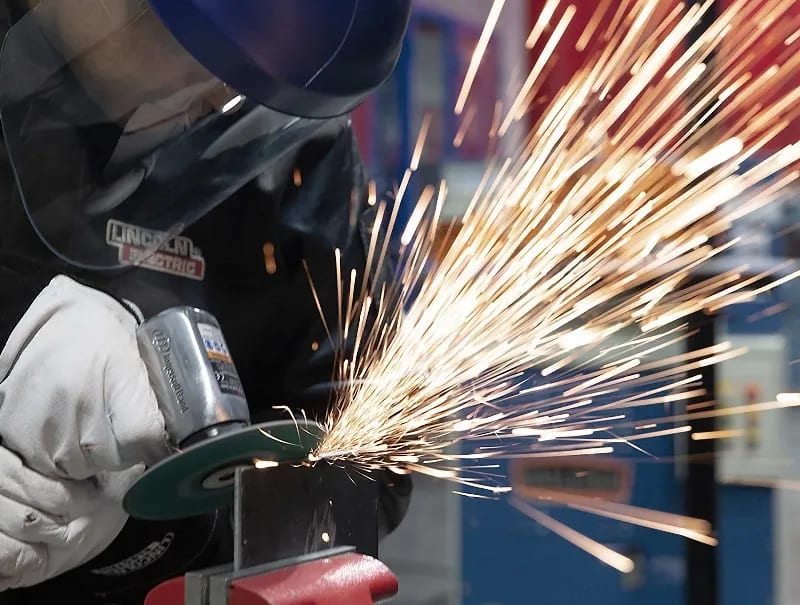What Belgrade Fabrication uses as essential steps for dealing with incomplete fusion
Typical Welding Repair Service Issues and Exactly How to Address Them Effectively
Welding repairs commonly come across a range of issues that can endanger the stability of the end product. Usual troubles include poor infiltration, porosity, and misalignment, among others. Each defect provides special challenges that need certain approaches for resolution. Understanding these issues is vital for welders aiming to improve their abilities and results. This conversation will discover these common welding repair service concerns and efficient methods to resolve them.
Inadequate Infiltration
Insufficient infiltration takes place when the weld steel falls short to completely fuse with the base material, resulting in weak joints and possible architectural failings. This concern usually comes from not enough warmth input, wrong electrode angle, or inappropriate welding rate. Welders might experience insufficient infiltration as a result of a miscalculation of the needed criteria for a certain product thickness or type. In addition, contamination on the base material's surface area can hinder effective bonding, aggravating the trouble. To resolve inadequate penetration, welders must ensure appropriate setups on their equipment and keep a clean job surface area. Regular evaluation of welds is suggested to determine any type of deficiencies early, permitting for timely corrections and the prevention of jeopardized architectural stability in bonded assemblies.
Porosity
Porosity is a common flaw in bonded joints that materializes as tiny gas bubbles caught within the weld metal. This issue can compromise the stability of the weld, leading to minimized strength and prospective failing under anxiety. Montana Mobile Welding and Repair Welding. Porosity normally occurs from contamination, wetness, or improper welding strategies, which enable gases to escape right into the molten weld swimming pool. To attend to porosity, welders must assure proper surface prep work, maintain a clean working atmosphere, and utilize suitable welding parameters. Additionally, selecting the right filler product and securing gas can mitigate gas entrapment. Normal inspection and testing of welds can aid identify porosity early, guaranteeing prompt corrective activities are taken, thus maintaining the top quality and reliability of the welded structure
Misalignment
Misalignment in welding can emerge from various elements, consisting of incorrect configuration and thermal growth. Comprehending the root causes is important for reliable resolution. A number of correction techniques are offered to realign components and assure architectural stability.
Sources of Imbalance
Welding misalignment typically stems from a variety of underlying concerns that can endanger architectural stability. One key cause is inappropriate fit-up of components prior to welding, which can cause spaces and irregular surface areas. Variations in thermal expansion throughout the welding process can also lead to distortion, specifically if the products being joined have various coefficients of expansion. Additionally, inadequate fixturing and clamping may stop working to hold elements securely in place, bring about motion throughout welding. Improperly conserved equipment, consisting of welding machines and devices, might present inconsistencies in the weld bead, additional adding to imbalance. Finally, operator error, coming from not enough training or experience, can additionally play a significant function in developing misaligned welds.
Correction Techniques Readily Available
Resolving imbalance successfully requires a mix of corrective methods tailored to the certain problems available. One common method is using fixtures or jigs to hold components in the appropriate placement throughout welding, ensuring regular positioning. Furthermore, preheating the products can help decrease distortion and improve fit-up. For considerable imbalance, mechanical realignment strategies, such as utilizing hydraulic jacks or clamps, can be utilized to remedy the setting before welding. Post-weld heat therapy may likewise be necessary to ease anxieties triggered by misalignment. Careful inspection and modification throughout the configuration phase can stop imbalance issues from coming to be substantial problems, advertising a smoother welding process and improving general structural honesty.
Distortion
Distortion is a common obstacle in welding that can develop from numerous factors, including unequal home heating and air conditioning. Comprehending the reasons for distortion is essential for implementing efficient prevention techniques. Resolving this issue not just boosts structural honesty but additionally boosts the overall top quality of the weld.
Root causes of Distortion
When based on the extreme heat of welding, materials typically undergo modifications that can cause distortion. This phenomenon mainly arises from thermal development and tightening throughout the welding procedure. As the weld area warms up, the material expands; upon air conditioning, it contracts, which can create inner stresses. In enhancement, irregular heating across a workpiece can intensify these anxieties, leading to warping or bending. The type of material also plays a significant role; metals with differing thermal conductivity and coefficients of growth may react in a different way, causing unforeseeable distortions. Furthermore, poor joint layout and insufficient fixturing can add to imbalance throughout welding, enhancing the probability of distortion. Comprehending these reasons is important for reliable welding repair work and prevention techniques.
Prevention Techniques
Efficient avoidance strategies for distortion throughout welding concentrate on regulating warm input and ensuring appropriate joint design. Maintaining a regular warmth input assists to lessen thermal development and tightening, which can result in distortion. Using techniques such as pre-heating the workpiece can also decrease the temperature level gradient, advertising consistent home heating. In addition, selecting proper joint layouts, such as T-joints or lap joints, can boost stability and lower stress and anxiety concentrations. Executing correct fixturing to safeguard the work surfaces in position additionally help in preserving placement throughout the welding process. Staggered welding sequences can disperse warmth much more equally, protecting against local distortion. By using these approaches, welders can significantly decrease the chance of distortion and improve the overall high quality of their welds.
Cracking
Cracking is a typical concern encountered in welding repair services, frequently resulting from various variables such as incorrect cooling prices, product choice, or inadequate joint preparation. The event of cracks can considerably compromise the honesty of the weld, bring about possible failures throughout operation. To resolve this problem, welders must first evaluate the origin creates, making sure that products work and properly picked for the specific application. Furthermore, managing the cooling price throughout the welding procedure is vital; quick air conditioning can induce stress and result in fracturing. Correct joint style and preparation also add to decreasing the risk. Executing these approaches can boost weld quality and durability, ultimately reducing the possibility of fracturing in completed weldments.

Insufficient Combination
A substantial problem in welding repairs is insufficient fusion, which happens when the weld steel does not adequately bond with the base material or previous weld passes - Montana Mobile Welding and Repair Welding. This issue can cause weaknesses in the joint, possibly endangering the integrity of the bonded framework. Variables adding to insufficient fusion include insufficient heat input, improper welding strategy, and contamination of the surface areas being signed up with. To address this issue properly, welders must guarantee appropriate look these up pre-weld cleaning and surface area prep work, in addition to change their welding parameters to achieve sufficient penetration and combination. Normal examination during the welding process can likewise assist determine insufficient fusion early, permitting prompt restorative procedures to enhance the total high quality of the weld
Overheating
While welding repairs can improve architectural integrity, overheating presents a significant difficulty that can bring about right here product destruction. Too much warmth throughout welding can change the mechanical residential or commercial properties of steels, causing lowered toughness, increased brittleness, and bending. This phenomenon is particularly vital in high-stress applications where architectural integrity is paramount. Determining overheating can entail visual examinations for staining or distortion, in addition to keeping track of temperature level throughout the welding process. To mitigate the risks related to getting too hot, welders should use proper techniques, such as regulating warmth input, adjusting travel rate, and utilizing ideal filler products. In addition, applying pre- and post-weld warmth treatments can aid bring back material properties and boost the total quality of the repair, making sure lasting performance and safety.
Frequently Asked Questions
What Are the Usual Indications of a Welding Problem?

Just How Can I Examine My Welds for Top quality?
To check welds for quality, one can make use of aesthetic inspections, ultrasonic testing, and radiographic methods. Each technique guarantees structural integrity, identifies defects, and validates adherence to defined standards, eventually improving the integrity of the bonded joints.
What Security Safety Measures Should I Take While Welding?
When welding, one should focus on safety and security by wearing proper personal safety devices, making sure appropriate air flow, safeguarding flammable materials away, preserving a clean workspace, and recognizing environments to avoid crashes and injuries.
Can I Repair a Weld Without Redoing the Entire Joint?
Fixing a weld without redesigning the whole joint is possible, depending upon the damage (Belgrade Fabrication). Methods such as this hyperlink grinding, adding filler material, or utilizing a welding procedure can successfully address particular imperfections while preserving the surrounding framework
What Devices Are Essential for Efficient Welding Repairs?
Crucial tools for efficient welding repair work consist of a welding equipment, wire brush, grinder, safety gear, clamps, and filler products. Each tool plays a crucial function in making certain quality and safety and security throughout the repair procedure. Porosity normally arises from contamination, wetness, or inappropriate welding techniques, which enable gases to get away right into the molten weld swimming pool. Poorly maintained equipment, including welding devices and tools, might present inconsistencies in the weld bead, further contributing to misalignment. When subjected to the intense heat of welding, materials typically undertake adjustments that can lead to distortion. Breaking is a common concern experienced in welding fixings, frequently resulting from different factors such as improper cooling prices, product choice, or insufficient joint prep work. A significant issue in welding fixings is insufficient combination, which happens when the weld metal does not sufficiently bond with the base product or previous weld passes.